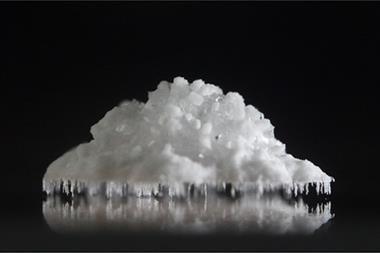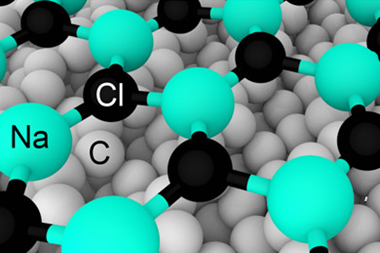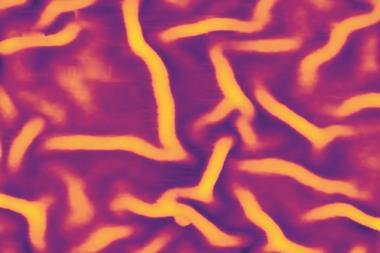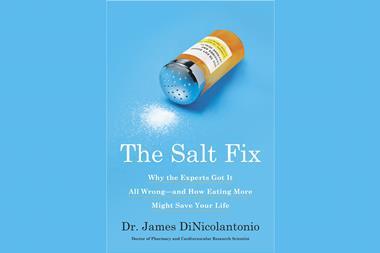It is well-known that overconsumption of salt is a major contributor to hypertension-related illnesses globally, with governments and health organisations encouraging people to cut their dietary sodium chloride. A salt substitute that has all the taste and none (or fewer) of the associated health problems would go a long way to tackling this health crisis. However, a palatable salt substitute remains a stubborn puzzle that has confounded all efforts to solve it.
Brian Lewandowski from the Monell Chemical Senses Center in Philadelphia, US, was among the researchers at the 256th American Chemical Society meeting in Boston who are searching for something other than sodium chloride that can provide a salty taste. ‘It would be nice to have something like an artificial sweetener, but for salt,’ Lewandowski tells Chemistry World.
Currently, the best alternatives to salt are mixtures that usually replace sodium chloride with potassium chloride. However, potassium chloride can taint food with an unpleasant taste. These products typically use complicated combinations of potassium chloride and other salts, and then add extra compounds to block any bitter taste.
‘Salt has multiple properties that are very attractive, and thus reducing it and replacing it with something that doesn’t actually taste good is a difficult problem for the food industry to solve,’ explained Lewandowski. ‘Even the best efforts at salt substitutes at the moment are still going to taste unpleasant.’
The taste of salt is significantly more complicated than the other four tastes – sweet, bitter, umami and sour – which generally have one type of taste receptor. For example, the receptor responsible for sensing sweetness is a combination of two proteins called T1R2 and T1R3, and the receptor for umami is a combination of T1R1 and T1R3. Depending on how they combine, this related family of proteins forms either a sweet taste receptor or an umami taste receptor.
The bitter taste receptors are from a family of proteins called T2Rs, and scientists have identified a population of cells that respond to sour taste, many of which have their own specific receptor. ‘We have narrowed down the possibilities for the sour receptor considerably – we know it is some sort of potassium channel, and likely also a proton channel working in concert,’ Lewandowski said.
However, replicating the taste of salt is trickier because there are two different biological pathways that underlie it – the amiloride-sensitive and amiloride-insensitive pathways. As the names imply, the former pathway is more sensitive to salt and is activated at lower salt concentrations, while higher concentrations of salt are required to activate the latter pathway.
Two biological pathways
Further confounding the search for a salt replacement is the fact that, unlike with the other taste qualities, multiple populations of cells respond to salt and so do subsets of the other taste cell types. ‘Instead of having a single, dedicated population of taste cells, it looks like the response to salts is distributed across a bunch of different types of taste cells that perform other tasks,’ Lewandowski explained.
Scientists have identified an epithelial sodium channel as the salt receptor for the amiloride-sensitive pathway, but the receptor for the amiloride-insensitive pathway remains a mystery. ’The identity of the amiloride-insensitive receptor is sort of the last big question as far as the molecular basis of taste is concerned,’ Lewandowski said. ‘If we could identify this mechanism, then companies that are looking to make an artificial salt or a salt taste enhancer would now have a target to look for.’ Such a discovery would enable a targeted screen to find compounds that affect the activity of that particular receptor.
Given the difficulty of mimicking a small molecule like sodium chloride, it may be more realistic to develop a salt flavour enhancer – a chemical that interacts with the receptors for salt to make them more active – rather than a salt substitute. ‘With an enhancer, when you taste a low quantity of sodium chloride, these receptors are open longer, or are more active, or there are more of them present on the cell surface, and that means that this low concentration of sodium chloride now tastes like a higher concentration,’ Lewandowski explained.

















2 readers' comments